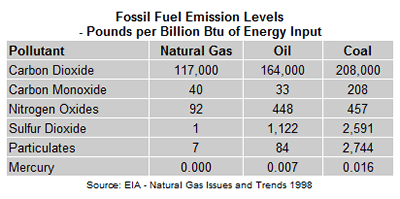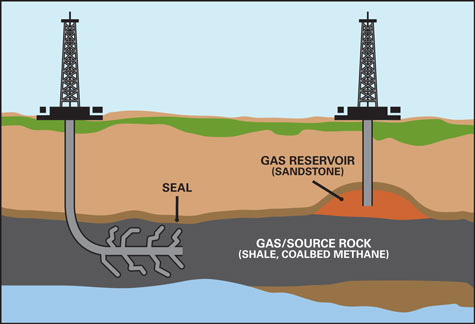MIT report : Natural Gas can be short term solution for green house gas reduction
 |
| Top Natural Gas Producing Countries - US Natural Gas Production got a shot in arm becasue of the "Shale Gas" production |
Natural gas is important in many sectors of the economy: for generating electricity, as a heat source for industry and buildings, and in chemical feedstock. Despite its vital importance to the economy, natural gas has often been overlooked, or at best taken for granted, in the debate about the future of energy.
Over the past two or three years, this has started to change, and natural gas is finding its place at the heart of the energy discussion. Given the abundance of natural gas available through extensive global resources and the recent emergence of substantial unconventional supplies in the United States and discovery of new sources in some countries, worldwide usage of the fuel is likely to continue to grow considerably and contribute to significant reductions of greenhouse gas emissions for decades to come, according to a comprehensive, multidisciplinary study carried out over the last three years by MIT researchers.
There are a number of reasons for this shift. Particularly in US natural gas has found an increased focus. The recent emergence of substantial new sup- plies of natural gas in the U.S., primarily as a result of the remarkable speed and scale of shale gas development, has heightened awareness of natural gas as a key component of indigenous energy supply and lowered prices well below recent expectations. Instead of the anticipated growth of natural gas imports, the scale of domes- tic production has led producers to seek new markets for natural gas, such as an expanded role in transportation. Most importantly for this study, there has been a growing recognition that the low carbon content of natural gas relative to other fossil fuels could allow it to play a signifi- cant role in reducing carbon dioxide (CO2) emis- sions, acting as a "bridge" to a low-carbon future.
The study — managed by the MIT Energy Initiative (MITEI) and carried out by a team of Institute faculty, staff and graduate students — examined the scale of U.S. natural gas resources and the potential of this fuel to reduce greenhouse gas emissions. Based on the work of the multidisciplinary team, with advice from a board of 18 leaders from industry, government and environmental groups, the report examines the future of natural gas through 2050 from the perspectives of technology, economics, politics, national security and the environment. The full report, including additional data and extensive new analysis, was released by MITEI this week.
 |
| Emissions from different types of Fossil Fuels |
Natural gas is the cleanest of all the fossil fuels, as evidenced in the Environmental Protection Agency’s(US) data comparisons in the chart adjacent , which is still current as of 2010. Composed primarily of methane, the main products of the combustion of natural gas are carbon dioxide and water vapor, the same compounds we exhale when we breathe. Coal and oil are composed of much more complex molecules, with a higher carbon ratio and higher nitrogen and sulfur contents.
This means that when combusted, coal and oil release higher levels of harmful emissions, including a higher ratio of carbon emissions, nitrogen oxides (NOx), and sulfur dioxide (SO2). Coal and fuel oil also release ash particles into the environment, substances that do not burn but instead are carried into the atmosphere and contribute to pollution. The combustion of natural gas, on the other hand, releases very small amounts of sulfur dioxide and nitrogen oxides, virtually no ash or particulate matter, and lower levels of carbon dioxide, carbon monoxide, and other reactive hydrocarbons.
Because it has the lowest carbon content of all fossil fuels, natural gas can play a critical role as a bridge to a low-carbon future. The study’s economic analysis of the effects of a national policy calling for a 50 percent reduction in greenhouse gas emissions shows that such a policy would result in widespread substitution of natural gas for coal in electricity generation. However, in order to achieve even greater reductions in carbon emissions — which may be mandated in coming decades — natural gas will in turn need to make way for other low- or zero-carbon sources of energy. It is in this sense that natural gas may be seen as a “bridge” rather than as the ultimate long-term solution itself.
The report says that it is important to continue a robust program of research and development on other energy alternatives, which can be used to take the place of natural gas later in the century if and when emissions regulations become stricter. Henry Jacoby, MIT professor of management and co-chair of the study, said that such research is crucial because “people speak of [natural] gas as a bridge to the future, but there had better be something at the other end of the bridge.”
The New Unconventional Source of US - "Shale Gas"
 |
| Shale Gas production |
The study found that, contrary to best estimates of a decade or so ago, natural gas supplies are abundant and should be ample even for greatly expanded use of the fuel in coming decades. This is largely the result of the development of “unconventional” sources, such as shale gas. Because of its abundance, widespread distribution and advantages in cost and emissions, use of natural gas is expected to increase substantially under virtually all scenarios involving national policies, regulations and incentives, the study notes.
“Shale gas is transformative for the economy of the United States, and potentially on a global scale” because it has so dramatically increased the amount of gas that can be economically produced domestically, Anthony Meggs, a visiting engineer at the MIT Energy Initiative and co-chair of the study, said at Thursday’s press conference introducing the report.
Concerns have been raised about the possible environmental effects of developing shale gas using a controversial process called “fracking” (for hydro-fracturing), which involves injecting fluids into deep horizontal wells under pressure. The ultimate disposal of those fluids after they are pumped back out, and the possibility that they could contaminate water supplies, have been the subject of lawsuits and legislative attempts to limit the practice. The study found that “the environmental impacts of shale development are challenging but manageable,” and that some cases of the gas entering freshwater tables were “most likely the result of substandard well-completion practices by a few operators.”
The robust supply situation enhances the opportunities for natural gas to substitute for other fuels. Using very efficient natural gas powerplants to replace coal-fired plants is “the most cost-effective way of reducing CO2 emissions in the power sector” over the next 25 to 30 years, the report says. Natural gas will also play a central role in integrating more intermittent renewable sources — wind and solar — into the electricity system because they can easily be brought in and out of service as needed.
The study also finds important opportunities for cost and emissions reduction in industry by switching to very high-efficiency natural gas boilers,
and for more efficient energy use in commercial and residential buildings through new standards that would provide consumers information on end-to-end
energy use of space- and water-heating alternatives. Furthermore, the current large price difference between oil and natural gas, if sustained, could
lead to increased use of gas as a transportation fuel, either directly or through conversion to liquid fuel.
In addressing public concerns about the environmental impact of natural gas drilling operations, the industry could be taking a much more active role, said Ernest Moniz, director of MITEI and chairman of the study. The study makes many specific recommendations for improving well-development procedures, including full disclosure of chemicals used in the hydro-fracturing process and regional coordination on water-use issues. “An endorsement [of these policy recommendations] by industry would be very welcome,” Moniz said. “If industry actively promotes them, that can certainly help overcome” these public and legislative concerns.
